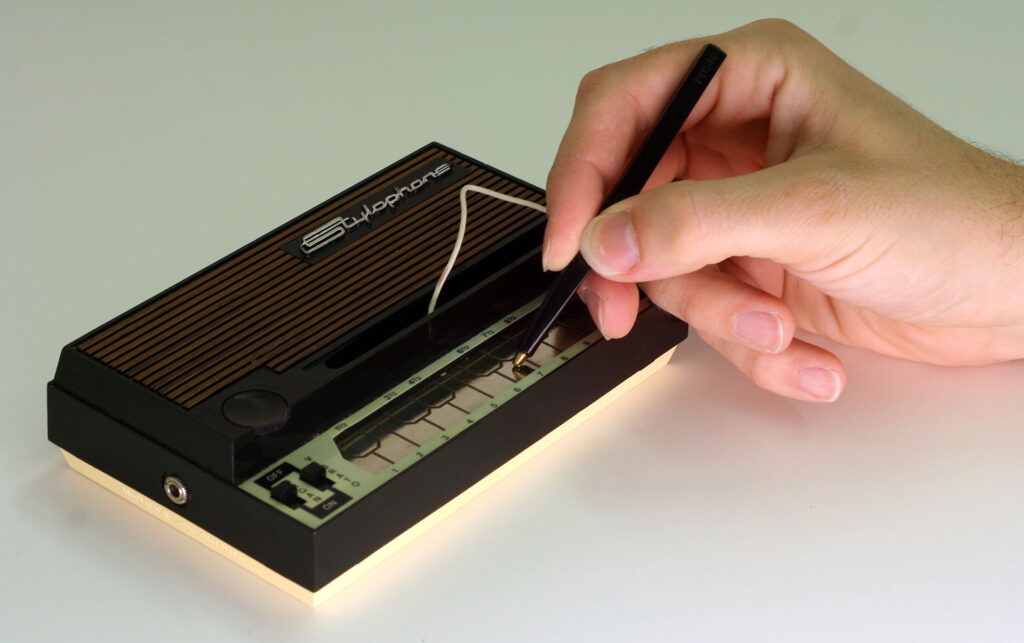As an Amazon Associate I earn from qualifying purchases.
While in lockdown, you might find yourself in the throes of Gear Acquisition Syndrome, searching for anything to pierce the boredom. You might also find yourself strapped for cash, and perhaps it’s not the time for you to plunk down a few thousand on a shiny new Moog. But there are other ways to satisfy your craving for something that will tickle your analog fancy and not break the bank. And what if I told you this could be accomplished while still getting one of the best inexpensive analog synthesizers ever made?
Allow me to introduce you to the Stylophone GEN-X1. Actually based on a rather old piece of kit, the Stylophone was originally invented in 1967 by Brian Jarvis. It was considered by most to be a toy, but were occasionally used by professional musicians, not the least of which was David Bowie.

The original Stylophone came and went rather quickly, but gained new life in 2003 when Dubreq was re-formed byBen Jarvis, son of the instrument’s original inventor. The re-launched S1 model had a digital sound source, and was followed in 2012 by an S2 model, a true fully-featured analog synth.
Back to the Analog Future
Fast-forward to 2017, Dubreq introduced the Gen-X1 analog synthesizer, which recalls the fun toy aspects of the original, while providing a surprisingly rich, classic analog synth sound, a miraculous feat at its low price.

The instrument may be played via a stylus keyboard, or a sound strip, the latter of which feels similar to a ribbon controller, which makes it uniquely suited for Theremin-like microtonal explorations. It does not feature MIDI, so you wouldn’t be able to plug this into a 5-octave controller and go at it like a traditional synth. That’s not the idea of the Stylophone, anyway. It’s charm is in its quirky behavior when played using the controls as they are designed.
When we think of the coolest and most famous inexpensive analog synths, we often think of quirky little numbers such as Roland’s SH-101, and the Moog Theremin. This little machine strikes us as deserving of a place among these instruments that blur the distinction between stocking-stuffer-toy and legendary analog royalty.
In addition to its surprisingly rich analog sound, it packs some surprising features, such as a built in delay, two sub=octaves for shockingly fat bass sounds, and even PWM. A mini jack in/out lets you process external sounds through its filter and delay. You can achieve crisp recordings through its output jack, though I must say, we are tempted to mic up its little built-in speaker, just to thoroughly enjoy its unique, lofi appeal.
To summarize, we can’t think of a more amusing gift for any synth enthusiast, whether a beginner or a seasoned professional who has every expensive piece of gear in the catalog. It’s hard to imagine that any talented keyboardist or producer wouldn’t find some joy in this surprisingly powerful little beast.
Also of Interest:
Amazon and the Amazon logo are trademarks of Amazon.com, Inc, or its affiliates.
Categories: Gear Reviews